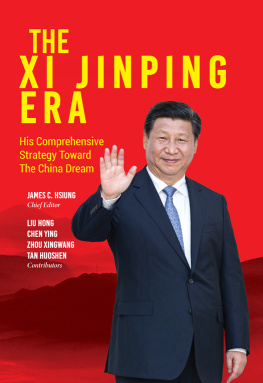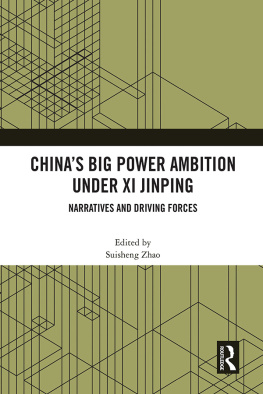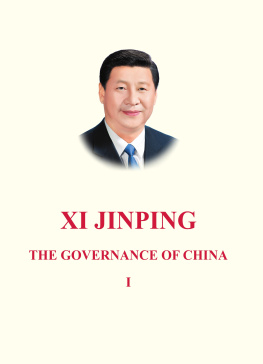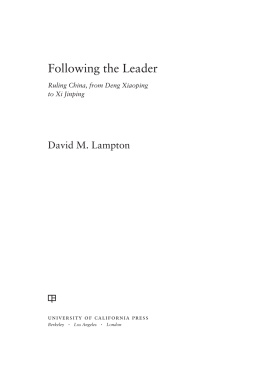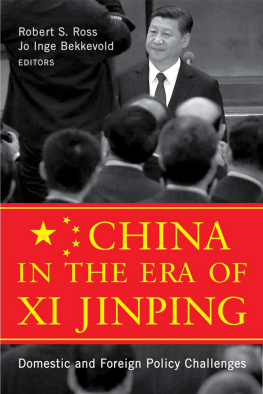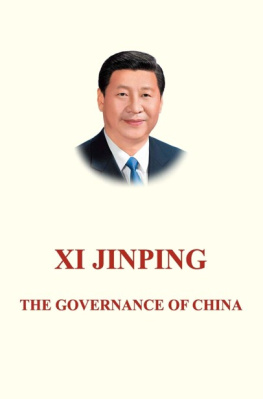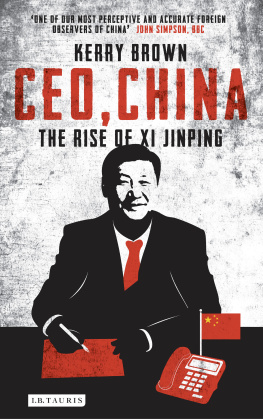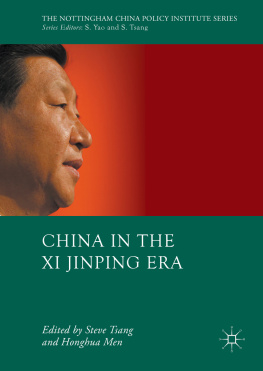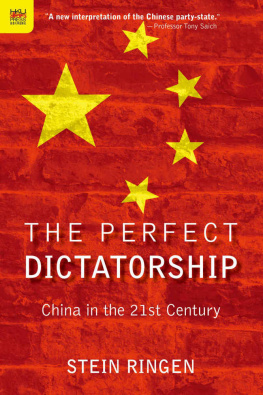Copyright 2015 by CN Times Books, Inc.
All rights reserved. No part of this publication may be reproduced, distributed, or transmitted in any form or by any means, including photocopying, recording, or other electronic or mechanical methods, without the prior written permission of the publisher, except in the case of brief quotations embodied in critical reviews and certain other noncommercial uses permitted by copyright law. For permission requests, write to the publisher, addressed Attention: Permissions Coordinator, at the address below.
BEIJING MEDIATIME BOOKS CO., LTD.
CN Times Books, Inc.
ORDERING INFORMATION : Quantity sales. Special discounts are available on quantity purchases by corporations, associations, and others. For details, contact the publisher at the address above. Orders by U.S. trade bookstores and wholesalers. Please contact Ingram Publisher Services: Tel: (866) 400-5351; Fax: (800) 838-1149; or .
INTRODUCTION
A New Era Unveiled by Xi Jinping
T he Book of Changes, as annotated by the Chinese sage Confucius, recommends marking the passage of time by observing astronomy, and governing the world by observing human culture. Those who would observe the trends of the time and understand the evolution of historical eras should set about observing the natural laws on earth. The rise of China and the revitalization of the Chinese nation have been among the most significant historical events since humankind embarked upon the twenty-first century. The best way to understand these exciting developing trends in China, from its ancient civilization through the new millennium, is to focus on its current leader, Xi Jinping, who has promoted reform on an unprecedented scale since his election in 2012. The answer to how Xi Jinping will lead China into a new phase of development and forge mutually beneficial relations with the nations of the world lies in his grand reform plan. Like Mao Zedong and Deng Xiaoping before him, Xi Jinping is changing China with his distinctive governing style.
I. A NEW LONG MARCH FOR CHINA
In 1944, the writer and journalist Harrison Salisbury, who was later to become deputy editor-in-chief of The New York Times, met fellow American journalist Edgar Snow in the Soviet Union and was told the story of the Long March of the Chinese communists for the first time. The story of the year-long march, which started in 1934 and covered 12,500 kilometers (circa 7,500 miles), fascinated and inspired him so much, he felt he had no choice but to write about it. In 1972, as President of the Writers Guild of America, he visited China with a delegation of authors from the United States. He asked if he could retrace the route of the Long March but was rejected. However, in March 1984, he returned to China with his wife, and in spite of his illness, he walked (and drove part of the way on) the route of the Long March. In 1985, he published the globally popular book The Long March: The Untold Story, which re-triggered interest in Chinas Long March all over the world.
The Long March is not only a grand historical epic but also a motivational totem of Chinese communism. Whenever China faces difficulties and hardships, Chinas Communist leaders never hesitate to inspire their people by citing the poems that Mao Zedong wrote throughout the course of the Long March.
On November 29, 2012, when Xi Jinping attended his first public state affair after being elected the general secretary of the Communist Party of China, he once again alluded to Loushan Pass, a famed poem Mao Zedong wrote while undertaking the Long March, as an attempt to capture the hard and arduous course of revitalization for the Chinese people.
Xi Jinping described how the National Museum of Chinas exhibition The Road to Rejuvenation reviewed the past and presented the future for the Chinese people, offering profound education and enlightenment. The Chinese peoples history could be described by Maos verses, proclaiming that the weight of the hardships and the depths of the sacrifice endured by the Chinese people as they entered modern times was exceptional in the course of world history. However, the Chinese people never surrendered, they rose to fight over and over again, and finally, the Chinese people became the masters of their own lives, achieving great progress to forge their own country. This demonstrates the great national spiritwith patriotism at its core.
During his visit to The Road to Rejuvenation, Xi Jinping also elaborated for the first time on the China Dream he and the Chinese people shared: to bring about a great rejuvenation of the Chinese nation is the greatest dream of China in modern times. The dream combines the long-cherished wishes of the Chinese people across generations, embodies the overall interests of the Chinese nation and its people, and embodies the future every Chinese person can look forward to.
To bring about the China Dream, the dream of restoring the Chinese nation to greatness, is the culmination of the most breathtaking long march, a march involving everyone in the nation, spanning almost two centuries.
When viewed from the vastness of outer space, Earth is just a small, blue, isolated planet. As the planet progresses around the sun, the beams of the sun seem to hit most prominently on some certain part of the globe; but rest assured, the land receiving this beautiful sunrise is indeed China. The land is high in the west and low in the east, and in this vast land two great rivers flowthe Yellow River and the Yangtze River. With its origins from the loess highland, across the plains of the Yellow and Yangtze River basins, lies the birthplace of one of the earliest human civilizations, the Chinese civilization, which has successfully continued through the last 5,000 years. The Chinese nation, like a great river with numerous tributaries running into it, strives toward unity. Since 221 BC when the First Emperor of Qin unified China, the territory and basic political system have been held in a relatively steady state. This is a country with the largest population on the planet where many fulfilling lives are led. However, opportunity and crisis turn into each other all the time. And inevitably, China fell into a declining valley from the late nineteenth century to the first half of the twentieth century.
No other nation in the world has deeper or more immediate feelings about the rise and fall of history. China was on top of the world for over a millennium (7131820), sporting a gross domestic product (GDP) that was the worlds largest; enjoying peace and comfort; and excelling in art, literature, and science.the war with the Japanese, is Arise! You who refuse to be bound slaves, lets stand up and fight for liberty and true democracy, all the world is facing the change of tyranny, everyone who wants freedom is now crying.
How to save the disaster-ridden Chinese nation and realize national independence, democracy and happy livelihoods for the Chinese people became the most urgent political appeal for China in the twentieth century.
The process of reversing the tragic fate of the Chinese nation and bringing about its rejuvenation has been full of hardship, sacrifice, and heroismlike the great Long March itselfand yet all difficulties in the way have been overcome and the sound of victory has soared skyward.

